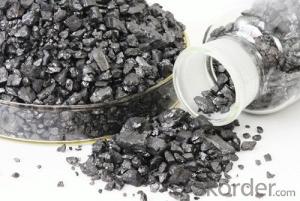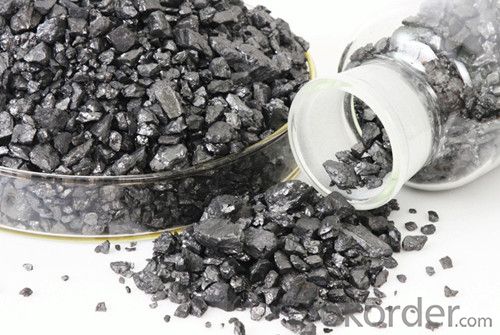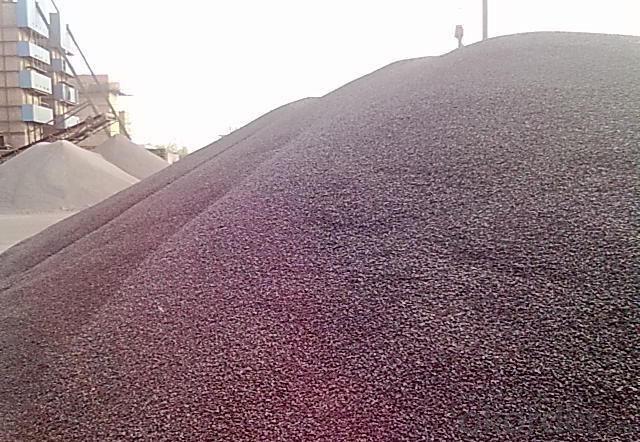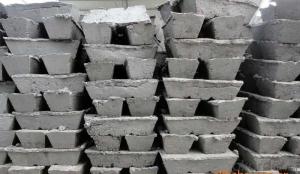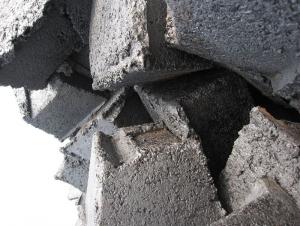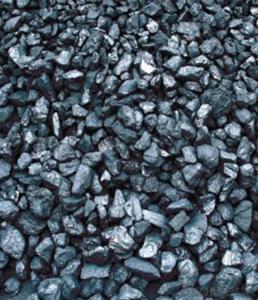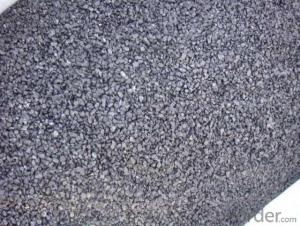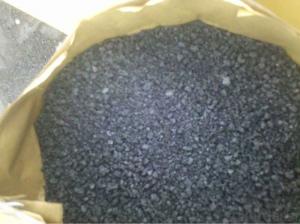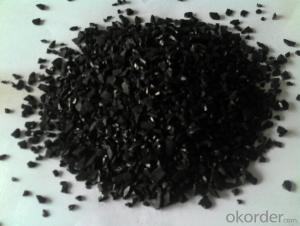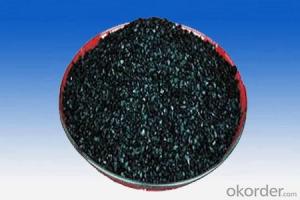FC92 Gas Calcined Anthracite/CNBM GCA Low Price
- Loading Port:
- Tianjin
- Payment Terms:
- TT OR LC
- Min Order Qty:
- 0 m.t.
- Supply Capability:
- 100000 m.t./month
OKorder Service Pledge
OKorder Financial Service
You Might Also Like
Packaging & Delivery
| Packaging Detail: | 25kgs/50kgs/1ton per bag or as buyer's request |
| Delivery Detail: | Within 20 days after receiving corect L/C |
Specifications
Calcined Anthracite
Fixed carbon: 90%-95%
S: 0.5% max
Size: 0-3. 3-5.3-15 or as request
Our Products:
•Feature: All of our goods are made in the best quality of world famous Tianjin. All of our products are with High carbon, Low ash, low sulphur, Low Moisture.
•Application:
The Calcined Anthracite Coal/Gas Calcined Anthracite Coal/Carbon Raiser is mainly used in steelmaking in electrical stove, screening water, shipbuilding sandblast to remove rust. It can reduce the cost of steelmaking effectively by replacing the traditional petroleum coke of carburant.Also can improve the Carbon content in steel-melting and Ductile iron foundry.
General Specification of Calcined Anthracite:
PARAMETER UNIT GUARANTEE VALUE | |||||
F.C.% | 95MIN | 94MIN | 93MIN | 92MIN | 90MIN |
ASH % | 4MAX | 5MAX | 6MAX | 7MAX | 8MAX |
V.M.% | 1 MAX | 1MAX | 1.5MAX | 1.5MAX | 1.5MAX |
SULFUR % | 0.5MAX | 0.5MAX | 0.5MAX | 0.5MAX | 0.5MAX |
MOISTURE % | 0.5MAX | 0.5MAX | 0.5MAX | 0.5MAX | 0.5MAX |
Size can be adjusted based on buyer's request.
Pictures of Calcined Anthracite:
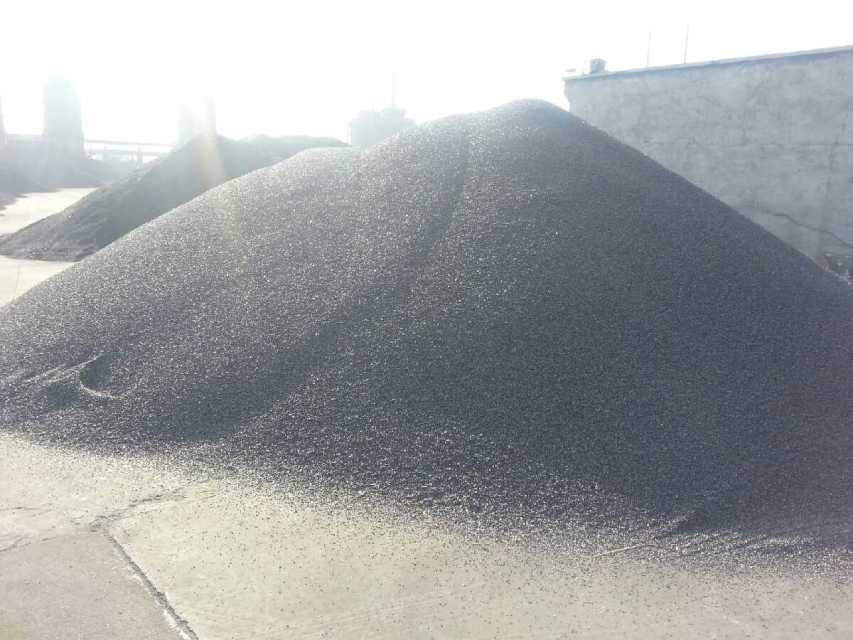
- Q: What are the properties of carbon fibers?
- Carbon fibers are a unique and versatile material with several notable properties. One of their most significant properties is their exceptional strength-to-weight ratio. Carbon fibers are incredibly strong, often surpassing the strength of steel, while also being significantly lighter. This property makes carbon fibers ideal for applications where high strength and low weight are crucial, such as aerospace and automotive industries. Another important property of carbon fibers is their stiffness. They exhibit high stiffness, which means they have minimal deformation under applied loads. This property is beneficial in applications where rigidity and stability are required, such as in the construction of sporting goods like tennis rackets or golf clubs. Carbon fibers also possess excellent chemical resistance. They are highly resistant to chemical corrosion, making them suitable for use in harsh environments where exposure to chemicals or corrosive substances is a concern. This property makes carbon fibers a preferred choice for applications in the chemical industry or offshore structures. Furthermore, carbon fibers have a low thermal expansion coefficient, meaning they do not expand significantly when exposed to heat. This property makes them useful in applications where thermal stability is crucial, such as in the manufacturing of high-temperature components like turbine blades or heat shields. Additionally, carbon fibers exhibit excellent fatigue resistance, allowing them to withstand repeated loading and unloading cycles without significant damage. This property is particularly advantageous in applications subjected to cyclic or dynamic stresses, such as in the construction of sports equipment or aerospace structures. Lastly, carbon fibers have excellent electrical conductivity. They can conduct electricity efficiently, making them suitable for applications where electrical conductivity is required, such as in the aerospace industry for lightning strike protection or in the manufacture of electronic devices. Overall, the properties of carbon fibers, including their high strength-to-weight ratio, stiffness, chemical resistance, low thermal expansion, fatigue resistance, and electrical conductivity, make them a highly desirable and sought-after material in various industries.
- Q: Why does the carbon content of steel increase and the mechanical properties change?
- 3, according to the forming method classification: (1) forging steel; (2) cast steel; (3) hot rolled steel; (4) cold drawn steel4., according to chemical classification(1): A. carbon steel low carbon steel (C = 0.25%); B. (C = 0.25~0.60%) in carbon steel high carbon steel; C. (C = 0.60%).(2): A. alloy steel, low alloy steel (alloy element content is less than or equal to 5%) B. alloy (5~10% alloy element content, high alloy steel (C.) alloy element content > 10%).5. Classification according to metallographic structure(1) annealed state of A. eutectoid steel (ferrite + Zhu Guangti), B. eutectoid steel (Zhu Guangti), C. eutectoid steel (Zhu Guangti + cementite), D., bainitic steel (Zhu Guangti + seepage body)(2) normalizing condition: A. pearlitic steel; B. bainitic steel; C. martensitic steel; D. austenitic steel(3) no phase change or partial phase change occurs6, according to smelting method classification(1) according to the kind of furnaceA.: open hearth steel (a) acid open hearth steel; (b) basic open hearth steel.B. converter steel: (a) the Bessemer steel; (b) basic Bessemer steel. Or (a) bottom blown converter steel; (b) (c) side blown converter steel; BOF steel.C. electric furnace steel: electric arc furnace (a) steel; steel electroslag furnace (b); (c) induction furnace steel; (d) vacuum consumable steel; (E) electron beam furnace.(2) according to the degree of deoxidization and pouring systemA. boiling steel; B. semi killed steel; C. killed steel; D. special killed steel
- Q: How does carbon affect the pH of rainwater?
- Carbon can affect the pH of rainwater through a process known as carbonic acid formation. When carbon dioxide (CO2) in the atmosphere dissolves in rainwater, it reacts with water molecules to form carbonic acid (H2CO3). This reaction lowers the pH of rainwater, making it more acidic. The carbonic acid dissociates into hydrogen ions (H+) and bicarbonate ions (HCO3-), which further contribute to the acidity of the rainwater. Therefore, increased levels of carbon dioxide in the atmosphere, such as those caused by human activities like burning fossil fuels, can lead to an increase in carbonic acid formation and subsequently lower the pH of rainwater, resulting in acid rain.
- Q: How does carbon impact ocean acidity?
- Ocean acidification is caused by carbon, which impacts the acidity of the ocean. When seawater absorbs carbon dioxide (CO2) from the atmosphere, it reacts with water molecules and forms carbonic acid. This process lowers the pH levels of the ocean, making it more acidic. Human activities, including burning fossil fuels, deforestation, and industrial processes, are the primary sources of carbon dioxide in the atmosphere. As these activities increase the concentration of CO2 in the atmosphere, more of it is absorbed by the oceans. The increase in acidity has negative effects on marine life. Organisms with calcium carbonate shells, such as coral reefs, shellfish, and some plankton species, are particularly vulnerable to ocean acidification. The higher acidity makes it difficult for these organisms to build and maintain their shells, resulting in reduced growth rates and increased mortality. Ocean acidification also disrupts the entire marine food web. It upsets the balance between predators and prey, as some plankton species struggle to develop and survive in acidic conditions. This can have a ripple effect on the entire ecosystem, affecting fish populations, marine mammals, and even humans who rely on seafood for sustenance. Furthermore, ocean acidification has significant economic consequences. Industries like commercial fisheries and tourism, which depend on healthy marine ecosystems, can suffer from the decline in fish populations and the degradation of coral reefs. To mitigate the impacts of carbon on ocean acidity, it is crucial to reduce carbon dioxide emissions and shift towards cleaner and more sustainable energy sources. Measures like creating marine protected areas and implementing sustainable fishing practices can also help protect and restore marine ecosystems, thereby mitigating the effects of ocean acidification.
- Q: What are the impacts of carbon emissions on the stability of coral reefs?
- Carbon emissions have significant impacts on the stability of coral reefs. Increased carbon dioxide levels in the atmosphere lead to ocean acidification, which hinders coral reef growth and weakens their structural integrity. Additionally, rising sea temperatures due to carbon emissions result in coral bleaching, where corals expel the symbiotic algae they depend on for survival. These combined effects make coral reefs more susceptible to disease outbreaks, slow recovery from disturbances, and ultimately increases the risk of their collapse, posing a significant threat to marine biodiversity and coastal communities that rely on them.
- Q: How does carbon affect the melting of polar ice caps?
- Carbon affects the melting of polar ice caps by contributing to global warming. As carbon dioxide levels increase in the atmosphere, it acts as a greenhouse gas, trapping heat and causing the Earth's temperature to rise. This leads to the melting of polar ice caps, as the increased temperatures accelerate the melting process, causing the ice to melt at a faster rate.
- Q: What are the impacts of carbon emissions on the stability of tundra ecosystems?
- The impacts of carbon emissions on the stability of tundra ecosystems are significant and wide-ranging. Carbon emissions, primarily in the form of greenhouse gases such as carbon dioxide and methane, contribute to global warming and climate change. As a result, the tundra ecosystems, which are particularly vulnerable to temperature changes, experience several negative effects. Firstly, increased carbon emissions lead to rising temperatures, causing the permafrost in the tundra to thaw. Permafrost is a layer of permanently frozen soil that acts as a foundation for the tundra ecosystem. When it thaws, the stability of the entire ecosystem is compromised. The ground becomes unstable, leading to collapsing landscapes, landslides, and altered drainage patterns. This can disrupt plant and animal habitats, as well as impact the distribution of water resources. Secondly, as permafrost thaws, organic matter that has been frozen for thousands of years starts to decompose. This decomposition process releases large amounts of carbon dioxide and methane into the atmosphere, further exacerbating the greenhouse effect. This positive feedback loop accelerates climate change and contributes to the overall increase in carbon emissions. Furthermore, the thawing of permafrost also affects the vegetation in tundra ecosystems. Many plant species in the tundra rely on the permafrost layer for stability and nutrient availability. With its degradation, plants face difficulties in establishing and maintaining their root systems. This, in turn, reduces plant productivity and alters the composition of plant communities. Changes in vegetation can impact wildlife, such as reindeer, caribou, and migratory birds, which depend on specific plant species for food and shelter. Additionally, the increased thawing of permafrost releases previously trapped pollutants and contaminants, which can further harm the stability of tundra ecosystems. These pollutants, such as heavy metals and toxic chemicals, can enter waterways and affect aquatic life, disrupting the delicate balance of the ecosystem. Overall, carbon emissions contribute to the destabilization of tundra ecosystems through the thawing of permafrost, alteration of vegetation, release of greenhouse gases, and contamination of water resources. These impacts not only affect the tundra's unique biodiversity but also have implications for global climate change. It is crucial to reduce carbon emissions and mitigate the effects of climate change to preserve the stability and integrity of these fragile ecosystems.
- Q: Carbon 60 related information
- Discovery and structural features of carbon sixtyIn October 7, 1996, the Royal Swedish Academy of Sciences decided to award the 1996 Nobel prize for chemistry to Robert FCurl, Jr (USA), Harold WKroto (UK) and Richard ESmalley (USA) in recognition of their discovery of C60.In early September 1995, Rice University of Texas Smalley lab, Kroto etc. in order to form the process simulation of carbon clusters N near the red giant in the atmosphere, the laser gasification experiment of graphite. They found that there is a series formed by an even number of carbon atoms from the molecular mass spectra, which have a 20~25 times larger than the other peak peak, the peak corresponding to the quality of the number of molecules formed by 60 carbon atoms.What structure of C60 molecules can be stabilized? Layered graphite and diamond tetrahedral structure exists in the form of two kinds of stable carbon, when 60 carbon atoms arranged in any of them, there will be many dangling bonds, will be very lively, not showing the mass signal so stable. This shows that the C60 molecule has a completely different structure from graphite and diamond. Inspired by architect Buckminster Fuller composed of pentagons and hexagons dome building, Kroto thinks that C60 is composed of 60 spherical carbon atoms with 32 sides, i.e. 12 pentagons and 20 hexagons, so there is no double bond in C60 molecule.In C60 molecules, each carbon atom with three carbon atoms in SP2 hybrid orbitals and the adjacent connected, a hybrid P track did not participate in the remaining in the C60 shell periphery and the cavity formed spherical PI key, thus having aromatic. In honor of Fuller, they proposed the use of Buckminsterfullerene to name C60. Later, all the molecules containing even numbered carbon, including C60, were called Fuller, and the name was fullerene.
- Q: What is the primary source of carbon monoxide in the atmosphere?
- The primary source of carbon monoxide in the atmosphere is the incomplete combustion of fossil fuels. When fossil fuels like coal, oil, and natural gas are burned for energy production, vehicles, or industrial processes, carbon monoxide is released into the air. In addition to human activities, natural sources such as volcanic eruptions and forest fires can also contribute to the presence of carbon monoxide in the atmosphere. However, the majority of carbon monoxide emissions can be attributed to human activities, making it an important air pollutant to address in order to protect human health and the environment.
- Q: What is a carbon electrode? What's the use? What's the current situation in the industry? Try to be specific. Thank you
- According to the composition of the electrode material, the electrode can be divided into three categories.The first kind of electrode is metal electrode and gas electrode, such as zinc electrode and copper electrode in Daniel cell, and standard hydrogen electrode;The second kind of electrodes are metal metal insoluble salt electrode and metal metal refractory oxide electrode, such as Ag-AgCl electrode.Third kinds of electrode is redox electrode (oxidation of any electrode was as redox electrode, here said the reduction electrode is refers to taking part in the electrode reaction substances are in the same solution), such as Fe3+, Fe2+ electrode solution composition.An electrode is a conductor in which an electric current enters or leaves an electrolyte during electrolysis. Electrolysis is the oxidation reduction reaction at the electrode interface.The electrode is divided into a cathode and an anode, and the anode is connected with the anode of the power supply, and the anode is oxidized. The cathode is connected with the cathode of the power supply, and the reduction reaction is arranged on the cathode.There are many kinds of electrolytic materials. Carbon electrodes are commonly used. In addition, titanium and other metals can also be used as electrodes. In electroplating, the metal containing the coating metal is often used as an anode, and the plated product is used as the cathode.
Send your message to us
FC92 Gas Calcined Anthracite/CNBM GCA Low Price
- Loading Port:
- Tianjin
- Payment Terms:
- TT OR LC
- Min Order Qty:
- 0 m.t.
- Supply Capability:
- 100000 m.t./month
OKorder Service Pledge
OKorder Financial Service
Similar products
Hot products
Hot Searches
